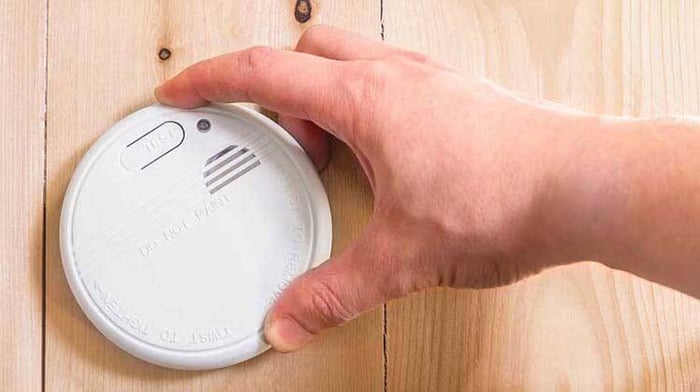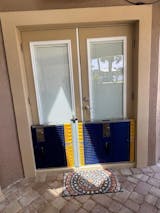Water damage is one of the most significant hazards for your property. Statistically, almost 98% of all American and European households suffer from water damage one way or another. Not to mention commercial buildings, where floods and leaks are practically an everyday routine. Floods can cost you a lot of money as they devalue your property, lead to expensive repairs and sometimes damage your belongings beyond recovery. From this point, spending money on preventive solutions such as a flood detector or a water barrier looks like a pretty wise investment.
Just imagine, according to Home Advisor, an average property owner has paid somewhere between $2,500 and $4,000 in 2021 for repairs caused by water damage.
At the same time, a flood barrier that will prevent water from getting into your house or business, damaging the building itself and your belongings, would cost you around $700. And it can be used multiple times.

And if the flooding comes unexpected, from outside or within your house, a flood detector will give you a heads up before the damage becomes severe. And such a device would cost you $80 tops or even somewhere around $10 if you get handy and adventurous and decide to make your own DIY water sensor!
In this article, we shall describe the principle of flood detectors, how they work and how much money you can save whether you decide to buy one or create it yourself.
How does a flood detector work?
Flood sensors come in all shapes, sizes, and colors. Some of them are pretty basic; others have additional functions and attractive designs. However, the principle of work for all those devices is the same.
The mechanism is based on the idea of water's high electrical conductivity. A flood detector has 2 external metal probes and recognizes possible flooding when the conductivity between them increases due to contact with water.
The rest is all about technology and the fantasy of mechanisms and engineers. Some flood detectors just set off an alarm - a high-pitched noise that is impossible to ignore. Others also have light indicators and a vibrating mechanism, which is helpful mainly for people with hearing disabilities. Some interactive models can be incorporated into the "smart house" ecosystem and send a notification to your smartphone so you would be warned about flooding in your house even if you are away.
It is pretty easy to get overwhelmed with a wide choice of different water sensors on the modern market. Especially considering the wide price range and the unobvious difference between those detectors. That is why we decided to create a checklist that will help you make an informed decision and pick the device that will serve you best.
How to choose a flood detector?
There are several essential features that you need to consider buying a flood detector for your house or business:
- How does it notify you about the flooding? - as we have already mentioned, for some people, a high-pitched noise will work perfectly. Others may need some additional indications like vibration or flashing lights. The ability to switch between those features would also be helpful. In case you install a flood detector in a house and leave for a vacation or business trip or simply spend all day out, the future of smartphone notifications can be a lifesaver. Of course, it will influence the price significantly. Set your priorities and see which feature is the most necessary in your case.
- Is it waterproof? - ironically, many flood detectors on the market are not waterproof. It means that they are basically disposable. Such a sensor would not be a wise investment, but plastic and metal details cannot be recycled and therefore are pretty hazardous for the environment.
- Does it have additional features? - some flood detectors can also predict possible flooding even if they don't get in touch with water directly. They can measure temperature and humidity levels and notify you about the risk of water damage before it actually happens.
- Is it plug-in or battery-operated? - flood detectors that work on batteries are more mobile and easy to install. Moreover, they keep working even if the electricity goes off or you turn off, leaving the house for several days. However, you need to remember to change the batteries regularly!

A DIY flood detector.
As we have already mentioned, a flood detector is a pretty simple device based on fundamental principles of physics. Therefore, technically, anyone can save a great deal of money and make a DIY water sensor.
You will need:
- A window/door sensor with alarm;
- A roll of electric tape;
- A copper wire;
- BS170 N-Channel MOSFET;
- 3.3 M OHM resistors
Here is how to build your anti-flooding device:
- Remove the plastic case of the alarm device;
- Disconnect the wire from the negative battery terminal;
- Connect that wire to the DRAIN (D) terminal on MOSFET;
- Connect a new wire to the SOURCE (S) terminal on MOSFET;
- Connect another end of that new wire to the negative battery terminal;
- Connect a resistor to the GATE (G) terminal on MOSFET;
- Use another wire to connect the resistor to the negative battery terminal;
- Connect a new wire (W1) to the positive battery terminal;
- Attach a new wire (W2) to the wire that connects resistor and negative battery terminal;
- Connect W1 and W2. If you hear the alarm, your DIY flood detector works perfectly.
This project is safe and does not require any special skills or experience with electricity. Even if you decide to spend some extra and get a commercial flood detector, such a DIY device can be a fun educational activity with your kids.
Combined with our flood barriers, such sensors will prevent water damage and save you a great deal of money, effort, and nerves in the future.
Contact Dam Easy today and learn about our innovative anti-flooding solutions that will protect you, your family, your house, or your business from disaster and ensure your safety in the face of the most common natural hazard of the XXI century!
Flood Barrier Door Dam - Ultimate Flood Gate

$949.00
DAM EASY® FLOOD GATE - DOOR DAM Floods are becoming more common around the world. What was once a 100-year phenomenon is now a seasonal trend that homeowners must deal with. That’s EXACTLY why you need this Dam Easy Flood… Read More



















